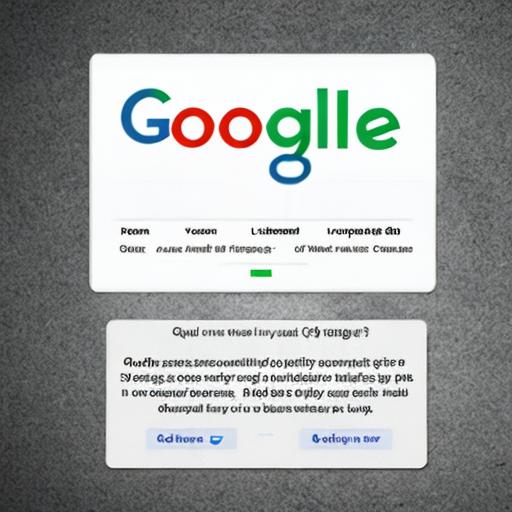When it comes to online advertising, Google Ads is one of the most powerful platforms to consider. It is the largest advertising platform in the world, with more than 3.5 billion searches per day. When using Google Ads, you need to understand one very important factor: Quality Score. Quality Score is one of the most important metrics in Google Ads. The higher your Quality Score, the better your ad will rank and the less you will pay for clicks. In this tutorial, we’ll cover the basics of Quality Score and how it works. We’ll also share some tips to improve your Quality Score to get better results in your advertising campaigns.
What is the Quality Score?
Quality Score is a measure of the quality and relevance of your ads and the landing pages they lead to. This affects your ad rank, i.e. the position in which your ad appears on the search results page. A higher Quality Score means your ad is more relevant to your target audience and you’re likely to rank higher. This means that your ad will appear higher on the search results page and you will get more clicks.
Quality Score is calculated by Google using several factors, including:
- Click-through rate (CTR): CTR is the number of clicks your ad receives divided by the number of impressions it receives. A higher CTR indicates that users find your ad relevant and interesting.
- Relevance of ad text: Your ad text should be relevant to the search query to which it is displayed. This means that your ad text must include the keywords users search for.
- Landing page quality: Your ad should lead to a landing page that matches the ad text and provides a good user experience.
- Ad format: Your ad’s format also affects its Quality Score. For example, highly engaging ad formats such as video ads tend to have a higher Quality Score.
Why is Quality Score important?
Quality Score is important because it affects your ad’s ranking and the cost you’ll pay per click . A higher Quality Score means your ad will appear higher on the search results page and you will get more clicks. Plus, a higher Quality Score means you’ll pay less for each click because you’re viewed as a more relevant advertiser. It can help you get better results while spending less money.
How is the quality level determined ?
Your Quality Score is a crucial factor in determining the success of your advertising campaigns. So what exactly is Quality Score and how is it determined?
Quality Score is basically a rating system that Google uses to assess the relevance and quality of your ads and landing pages. The score is determined by a combination of several factors, including your ad’s expected click-through rate (CTR), ad relevance, landing page experience, and how relevant your ad’s keywords are to to the user’s search query.
The expected CTR of your ad is determined by how often people who see it end up clicking on it. Ad relevance, on the other hand, is determined by how closely your ad matches the search intent of the user. Landing page experience refers to how easily users can navigate and find the information they need on your landing page. Finally, the relevance of your ad’s keywords to the user’s search query is determined by how well your ad matches the user’s search terms.
These factors all combine to give your ad a Quality Score between 1 and 10. The higher your Quality Score, the better your ad will perform in search results and the lower your cost per click. It is therefore essential to work on improving your quality score in order to maximize your return on investment and get the most out of your advertising campaigns.
How to improve your quality level?
Now that we understand what Quality Score is and why it’s important, let’s look at some tips for improving it.
- Choose the right keywords:
Choosing the right keywords is the first step to improving your Quality Score. Make sure your keywords are relevant to your ad and landing page. Use Google’s Keyword Planner to find the right keywords to target.
- Write relevant ads:
Your ad text should be relevant to the keywords you are targeting. Make sure your ad text includes the keywords users search for. Also, make sure your ad text is compelling and encourages people to click on your ad.
- Optimize your landing page:
Your landing page should match your ad text and provide a good user experience. Make sure your landing page loads quickly, is easy to navigate, and contains the information users are looking for.
- Use advertising extensions:
Ad extensions can help improve your ad’s relevance and increase its CTR, which can improve your Quality Score. Use relevant extensions such as location extensions or call extensions to make your ad more relevant and useful to users.
- Test different ad formats:
Different ad formats, such as video ads or responsive search ads, can help you improve your Quality Score. Experiment with different ad formats to see which ones work best for your ad campaigns.
The role of keywords in the quality score
Keywords play a vital role in determining the quality score of your ad campaigns . Google Ads, for example, uses keywords to match your ads to relevant search queries. The more your keywords match the search terms used by your target audience, the higher your Quality Score will be.
Along with relevance, the quality of your keywords also plays a role in determining your Quality Score. Highly relevant, high-quality keywords can result in a higher click-through rate (CTR), which in turn can improve your Quality Score. In contrast, low-quality keywords or keywords that aren’t relevant to your ad and landing page can lower your Quality Score and lead to wasted ad spend.
It’s important to review and update your keyword list regularly to ensure it remains relevant to your target audience and matches the content of your ad and landing page. Consider conducting keyword research to identify new opportunities and remove poorly performing keywords. This will help you improve your Quality Score, increase your CTR, and ultimately increase your ROI.
How to monitor and improve the quality score over time
Tracking and improving your Quality Score is key to maximizing the ROI of your ad campaigns. To do this, you need to have a thorough understanding of how the Quality Score is calculated and the factors that influence it. The main factors to monitor are ad relevance, landing page experience, and expected click-through rate (CTR).
One way to control your Quality Score is to use Google Ads . Google provides a Quality Score for each of your keywords, which can be found in the Keywords tab under the Status column. You can also use third-party tools to track your Quality Score over time and receive alerts when it drops.
Improving your quality score requires a targeted approach. To ensure your ad’s relevance, make sure your ad text matches your keywords and landing pages. For a landing page experience, make sure your landing pages are fast, easy to navigate, and provide relevant information to your visitors. To get the expected CTR, focus on creating compelling ad copy and targeting the right audience.
It’s also important to note that improving your Quality Score isn’t a one-time fix. You need to constantly monitor and adjust your campaigns to maintain a high level of quality. By regularly testing different ad text, landing pages, and targeting options, you can find the winning combination that maximizes your return on investment. By monitoring and improving your Quality Score over time, you can ensure that your advertising campaigns produce the best possible results.
Conclusion
Quality Score is an essential metric to consider when using Google Ads. This affects your ad’s rank, your ad’s position on the search results page, and the cost you’ll pay per click. By following the tips we’ve shared in this tutorial, you can improve your Quality Score and get better results with your ad campaigns. Remember to choose the right keywords, write relevant ads, optimize your landing page, use ad extensions, and experiment with different ad formats to see which ones work best for you. advertising campaigns. With these tips,










